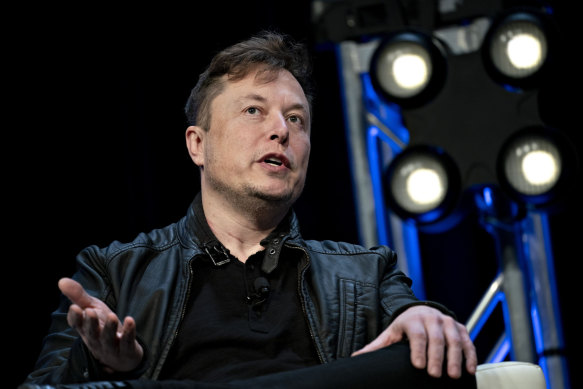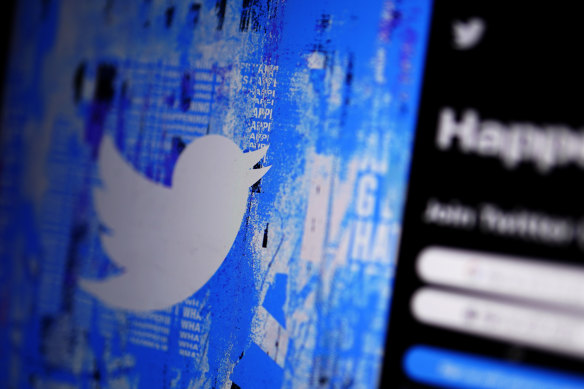Elon Musk’s Twitter is on the road to nowhere
Last month Elon Musk tweeted that Twitter was “now trending to break-even.” That trendline appears, however, to have taken a turn in the wrong direction.
Reports from online technology news sites this week are saying that Twitter’s daily revenue is down 40 per cent against the same period last year, as are its adjusted earnings.

An internal staff meeting was also reportedly told that revenue in the fourth quarter last year was down 35 per cent and that more than 500 advertisers have left the platform. That fits with other, external, research that found that more than 70 of the top 100 advertisers before Musk’s $US44 billion ($65 billion) acquisition of the social media platform have ceased spending on it.
The boycotting of the platform by some major advertisers has been in response to Musk’s re-opening of the platform to a horde of users previously banned for their anti-semitic, racist, sexist and other extreme tweets. The losses of advertising revenue is the price of Musk’s commitment to “free” speech.
The 40 per cent plunge in daily adjust earnings is as noteworthy as the fall in revenues, given that Musk took an axe to Twitter’s workforce almost immediately after taking control.
There have been eight waves of redundancies, including another 200 or so people retrenched about a week ago, that have reduced the number of Twitter employees from about 7500 pre-Musk to around 2000 today.
Not surprisingly, the platform has become less stable, albeit that it is remarkable that it is still functioning as well as it is with such a depleted workforce. In the past few days there have been several outages, with Musk himself describing the condition of the platform as “brittle.”
The economics of the platform were challenging even before Musk bought it and loaded it up with $US13 billion of debt and an extra $US1.5 billion a year of interest costs.
In 2021 Twitter lost $US221 million on $US5 billion of revenue. Last year its revenue was down 11 per cent to $4.4 billion and Musk said he expected it to fall to about $US3 billion this year. His cost-cutting, he said, would enable the business to roughly hit cash flow break-even this year.
The latest update on those revenues and earnings – the 40 per cent fall against last year’s – suggests that the losses of revenue and earnings are running at a significantly higher rate than Musk anticipated. Annualised, the additional losses of revenue, relative to Musk’s $US3 billion, would be approaching $US400 million.

He has attempted to diversify Twitter’s revenue base, charging $US8 a month for a “Twitter Blue” subscription that provides the subscribers with some extra features. There are thought to be about 225,000 of those paid subscribers, but that would only generate a little over $US20 million a year.
Musk needs far, far more than that if he is to get the business even close to break even and salvage the $US13 billion of his own money, the $US7 billion of equity contributed by other investors and the $US13 billion of debt funding that he’s loaded into the business.
He did meet his first quarterly interest payment of more than $US300 million last month amid suggestions that he is again trying to restructure the debt, perhaps by selling more of his Tesla shares. He sold about $US23 billion of those shares last year, undermining its share price and unsettling Tesla investors.
Tesla’s performance, aided by a decision to cut the price of its cars (another price cut has been announced this week), has pulled its share price off last year’s lows. It has rebounded from $US110 a share to $US193 a share but that’s still a long way short – about $US600 billion of market capitalisation short – of the $US381 a share at which Tesla was trading before Musk revealed his interest in acquiring Twitter.
No matter how clever Musk might be, given that Twitter wasn’t profitable been before it was loaded up with the acquisition debt and the extra $US1.5 billion of interest costs, it is hard to see how the business can be put on a stable footing unless that debt burden is slashed.
His Tesla shareholding is the obvious source of funding, albeit that it would be throwing good money after bad with only a remote prospect of achieving any return.
Musk’s own commitment to being a “free speech absolutionist” has resulted, not only in the loss of substantial revenues but also a (more modest, mid-single figures) decline in traffic on the platform which, along with the increasing glitches and outages, have been contributing factors in the financial squeeze the business is experiencing.
Some of those issues are, of course, within Musk’s control and could be reversed, although he shows no inclination to do so.
In an environment of rising interest rates and softening economies, which isn’t a favourable one for digital advertising, the outlook for Twitter’s already-diminished revenues isn’t encouraging and the scope to respond through further cost-cutting is, by definition – given how small the remaining staff numbers are – limited.
Musk, who has yet to relinquish his role as chief executive (while remaining CEO of Tesla), told staff last year that Twitter wouldn’t survive an economic downturn without the cost-cuts and significant subscription revenues.
He might have saved Twitter from a bankruptcy for now by slashing almost three-quarters of its workforce but, without a dramatic restructuring of its balance sheet and a reversal of the trend in its revenues, that might turn out to have been a temporary reprieve.
The Business Briefing newsletter delivers major stories, exclusive coverage and expert opinion. Sign up to get it every weekday morning.
Most Viewed in Business
Source: Thanks smh.com